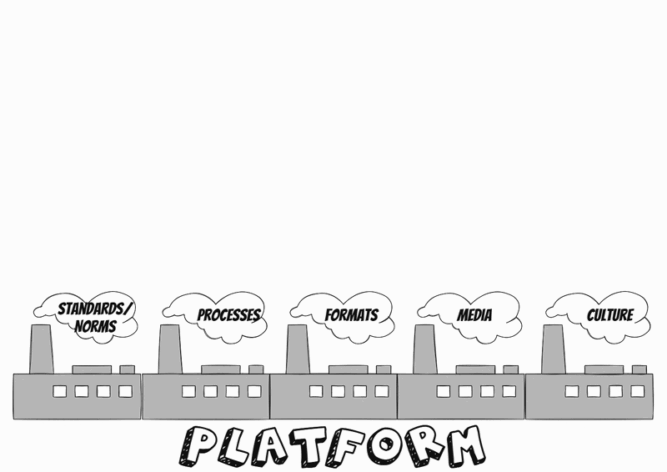Organization
An organization is the result of the configuration of areas, functions, business processes, and roles. Outcomes are hierarchical structures that encompass the superordination and subordination of positions or agile structures, as well as business processes. It includes the specification of the sequence of work and its interfaces from one process to another. It is about tasks, authorities, and responsibilities that, in the past, were tailored to individuals. Today, standardized roles are more appropriate. Traditional forms of organization distribute tasks in line or matrix organizations, as well as through networks or business processes.

The new agile structures utilize cross-functional, self-organizing platforms and podular structures that enable customer-oriented entrepreneurship within the company (intrapreneurship), forming temporarily and quickly dissolving at the end. Organizations are shaped by a value system and self-image as well as shared strategies, goals, and results.
The new focus on autonomous groups with their simple, viable products (Minimum Viable Product - MVP) is only possible if general functions such as the provision of standards, processes, formats, media, and culture are offered centrally. The groups can then focus on their core tasks.
Once these tasks are completed, individuals seek their new tasks, without external control by "unproductive" managers, who thereby lose the ability to set goals, organize work, and lead employees.

A distinction can be made between three primary
meanings: Organization as an instrument, function, and institution.
- Organization as an instrument encompasses the system of all regulations governing the distribution of tasks, authority, and responsibility (TAR) or skills, authority, and responsibility (SAR) within a company, including both its structural and procedural organization.
- An organization, as a function, is organizing itself, i.e., setting goals, structuring the organizational and operational framework, assigning roles (TAR/SAR), or coordinating between areas.
- An organization, as an institution, describes the result of organizing an enterprise with its roles, people, culture, and strategy.
The purpose of organizational structures is to
position and coordinate work within an organization in a way that enables goals
to be achieved efficiently and effectively. Organizational structures serve the following purposes:
- Clear role allocation
Who does what must be coordinated to avoid duplication of work and wasted effort? Tasks, authorities, and responsibilities (accountability) are assigned to individuals, areas, and processes. - Communication channels
The formal reporting and decision-making channels determine the organization's responsiveness. It involves the flow and exchange of information, - Leadership, governance, and collaboration
The organization is essentially determined by the pursued management style, the regulating governance (principles, corporate coordination, principles, and general roles), and the cooperation style. The structures ensure that organizational units and people work reasonably. - Doing the right thing right
The organization establishes the framework for optimal resource utilization (time, personnel, finances). - Adaptability
The designed structure determines how effectively and quickly a company can adapt to changing conditions (e.g., spontaneous customer requirements, new markets, technologies, and strategies). - Goal orientation
Organizational structures support the implementation of the corporate strategy by assigning goals.
The organizational and operational structure creates
the framework for action for exec(utives/utors) by providing structures and
service providers, integration, target-oriented alignment, and increased
effectiveness/ efficiency of the entire company.

